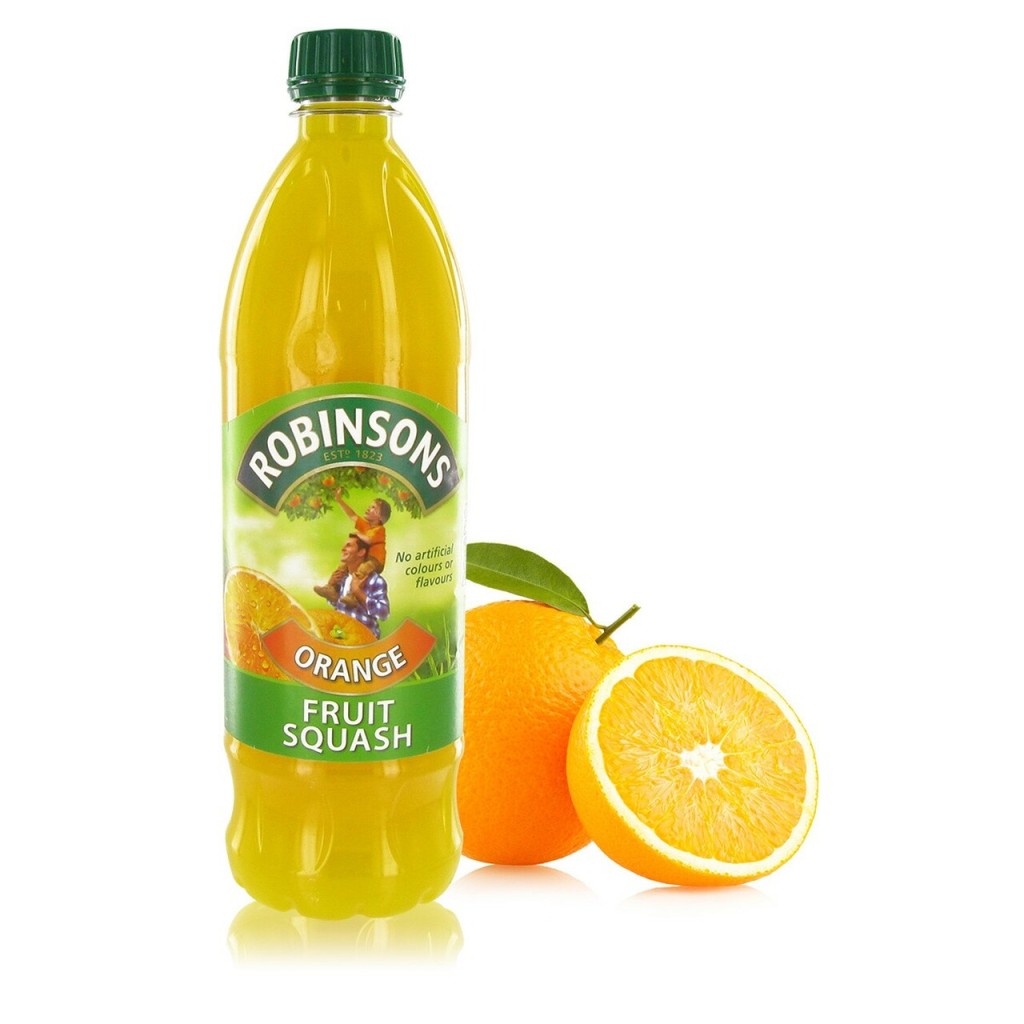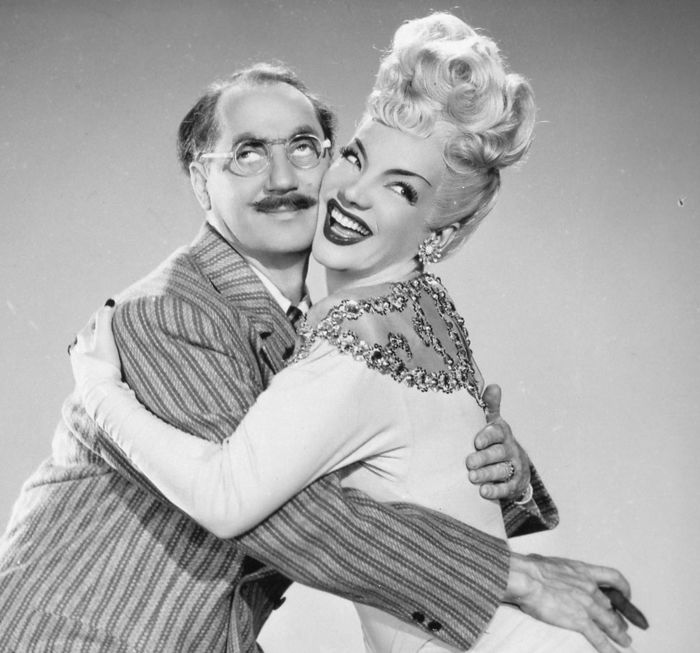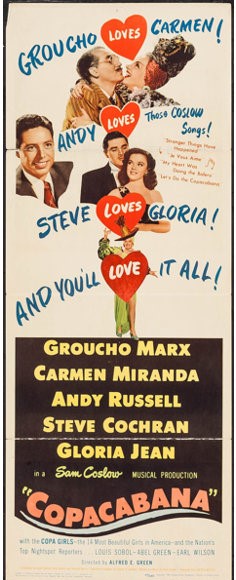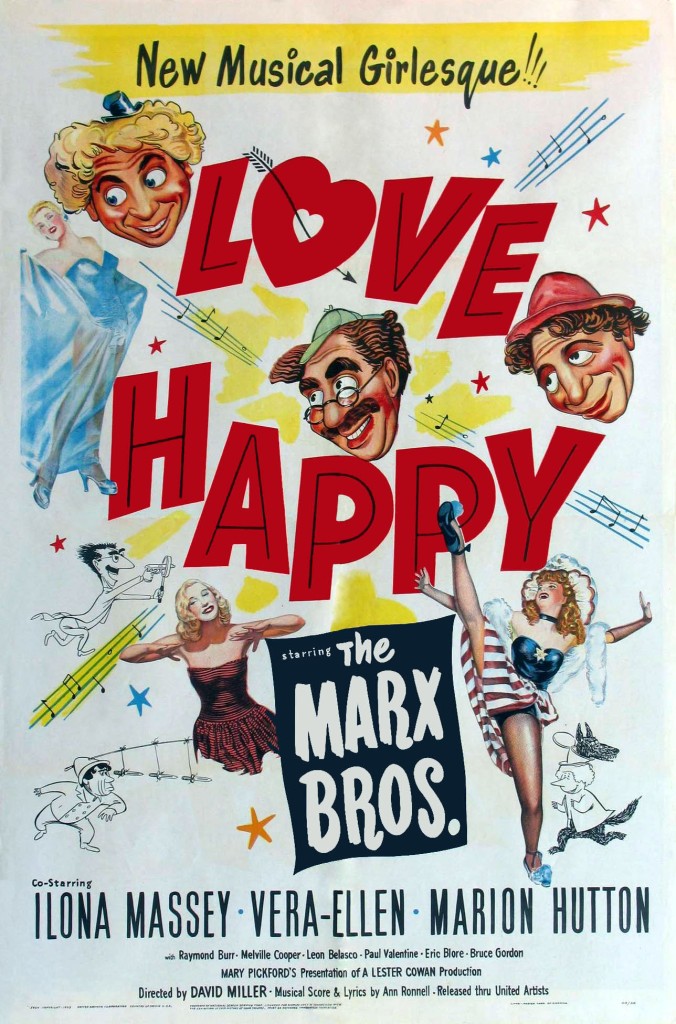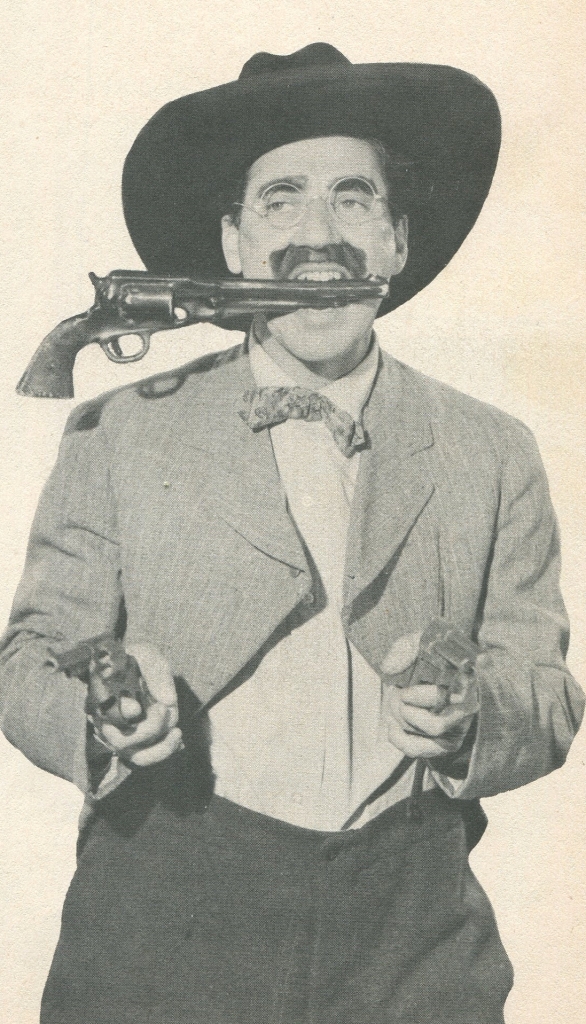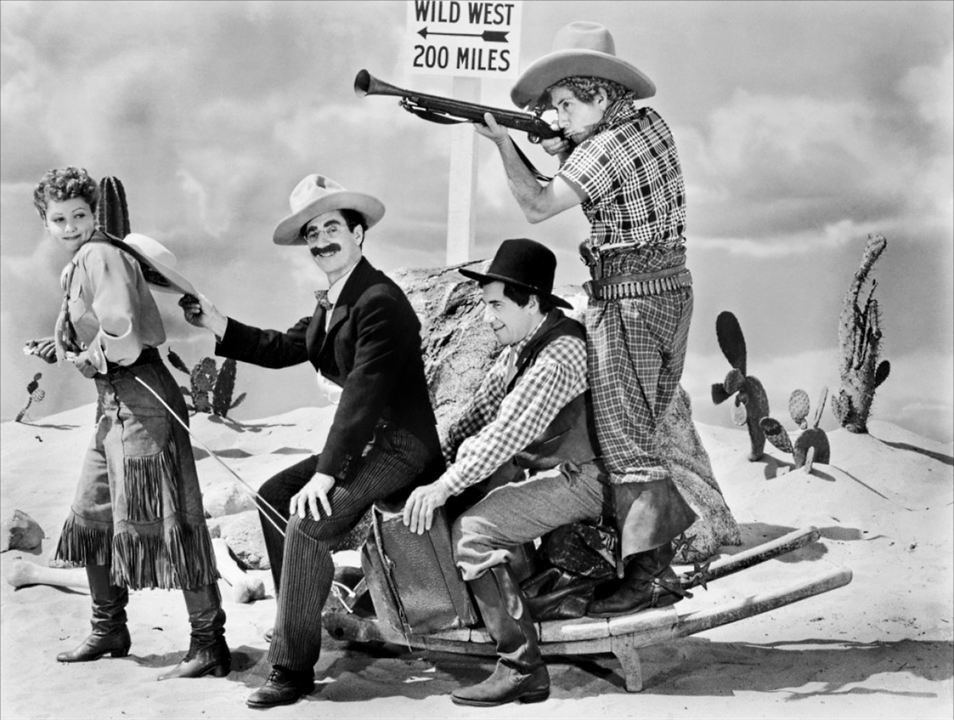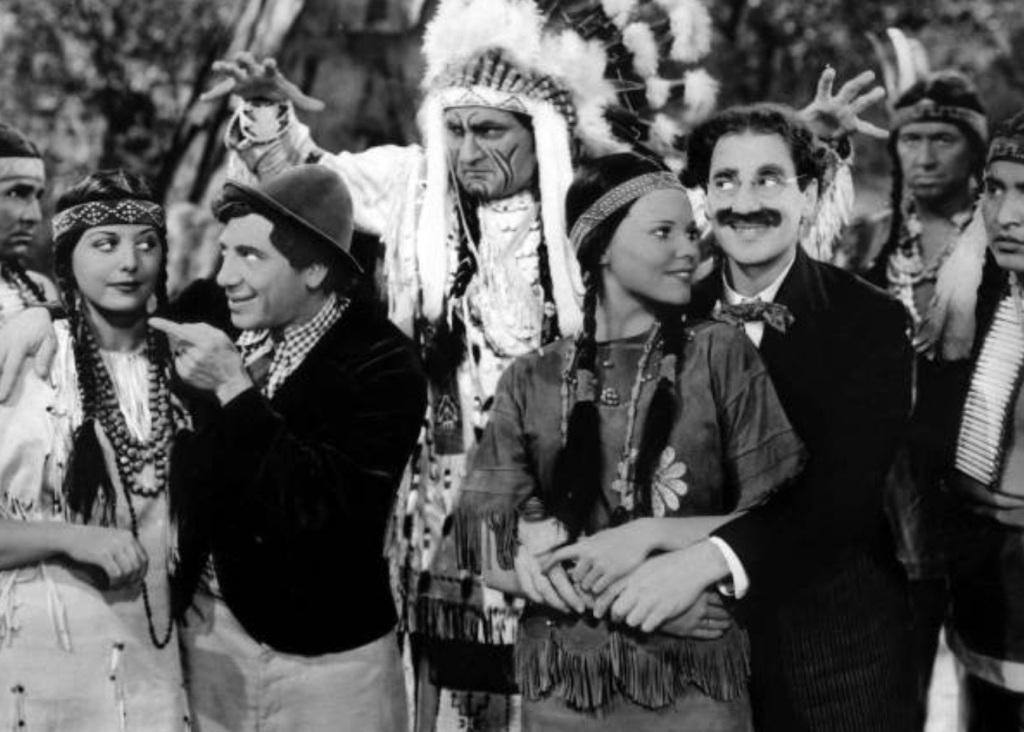Prologue: Ringo As Director?
The Beatles’ many-faceted multimedia company, Apple Corps, continued in spite of the split between its four creators. Like all the ex-Beatles, Paul was contractually tied to Apple Records (via Capitol) through 1975, but otherwise wanted nothing to do with the business that had driven such a wedge between himself and the other three. John, George, and Ringo continued to use Apple as a creative playground for the next few years.
Since the Beatles’ break-up, Apple Films had managed to release two George Harrison-produced documentaries: his own concert film, The Concert for Bangladesh, and an exploration of the music of Ravi Shankar, Raga. Apple Films had been nominally under the supervision of Denis O’Dell (also producer of The Magic Christian, see Part 2) since 1968, and it’s only natural that the movie-minded Ringo gravitated to this subsidiary of the company. O’Dell had one foot out the door by 1971, and Ringo pretty much took over, using the Apple Films office as his personal headquarters and clubhouse. Joined by the ever-present Keith Moon and Harry Nilsson, the Apple Films office on St. James Street often served as the starting point for a long night of carousing around the nightclubs of London.
Sometime in the second half of ‘71, Ringo made the acquaintance of Marc Bolan, frontman of the band T. Rex. Their single “Get It On” had burned up the U.K. charts that summer, and their classic album Electric Warrior — often credited as the first “glam rock” album — was about to drop. They were riding a crest of huge popularity in Britain (described in the music press at the time as “T. Rextasy”).
“I don’t know how he got in there,” says Ringo, whose memories of that era are understandably fuzzy. Ringo was charmed by the elfin, enigmatic songwriter and he was quickly included in the hard-partying drummer’s social circle. (The title and lyrics of Ringo’s 1972 single “Back Off Boogaloo” were inspired by Bolan’s cheery space-hippie nonsense sayings.)
When T. Rex played two shows to a combined 20,000 Rextatic fans at one of Britain’s largest venues, Wembley Arena (then known as “Empire Pool”), on March 18, 1972, Ringo decided to hire a film crew to capture the event for posterity. He eagerly clambered down into the photographer’s pit at the front of the stage and began calling the shots, even occasionally operating a film camera himself. The additional footage in the DVD release of the resuting film Born To Boogie shows that Ringo captured plenty of useable footage for a traditional concert film — but, alas, he had other ideas.
Ringo switched hats from documentarian to surrealist. “My theory about filming concerts is you can’t capture the atmosphere that was in the hall,” he explained. “So I needed to do more.” He and Bolan concocted a couple of fantasy sequences to make the film more of a visual experience. The scenes were both heavily inspired by the Beatles’ own hot mess of a 1967 TV movie Magical Mystery Tour. One, set on the runway at Denham Aerodrome, seemed pretty improvised — Bolan goofing around in a red convertible, joined by a Ringo in a mouse suit and an angry little person in a Dracula cape who proceeds to eat various parts of the convertible. The other sequence showed evidence of more planning — a fancy tea party turned carnivorous hamburger cookout, complete with a tuxedoed waiter, violinists, and nuns. Bolan as the Mad Hatter treats us to gentle acoustic versions of “Jeepster” and “Get It On” (neither of which work in this format), along with two other songs. This particular sequence was filmed around the lakes of John Lennon’s massive estate, Tittenhurst Park. (John had moved to the U.S. the previous August, and Ringo was designated as the property’s caretaker, until he bought it outright in 1973. Tittenhurst Park was also the setting for the last Beatles photo session in 1969 and John’s “Imagine” video in 1971.)
The fantasy sequences were exactly as wretched as you would expect, and show why surrealism shouldn’t be left in the hands of self-indulgent, drug-addled musicians. It’s always the same old sub-Fellini shit, featuring a lot of nuns, little people, and undercranking.
A non-concert segment that works slightly better is a jam session on a set heavily dressed with stuffed circus animals, giant toothbrushes, and tons of reflective foil paper. (Did it take place in Apple Studios, or Tittenhurst Park’s Ascot Studios? Sources are at odds, and all the random crap littering the place make it impossible to tell.) Joining T. Rex for renditions of Little Richard’s “Tutti Frutti” and their own “Children of the Revolution” are Elton John on piano, and Ringo on a second set of drums when he’s not randomly wandering in and out of shots in a clown costume and make-up. (The glimpses of the camera crew indicate they are also in full circus gear.)
Intercut among of all this dated, cringe-worthy hogwash is about forty minutes of decent T. Rex concert footage. In spite of the film’s issues, Ringo does demonstrate a natural feel for both photography and editing, and had he stuck with directing as a sideline, probably could have produced some truly quality work.
Apple Films premiered the 61-minute Born To Boogie in December 1972, with a wider release the following spring. “We made the film strictly for a teenage audience who demand youthful excitement at the cinema,” Bolan said. “I think the film does that — no more, no less.” The film came and went with little notice.
Bolan was killed in a London car crash five years later.
Ringo never returned to the director’s chair.
Computer programming was incredibly primitive in 1962. Room-filling computers running off of paper punch cards took hours to perform functions that a modern smart phone can do in a nanosecond. Security First National Bank in Van Nuys, California was an early adopter — the first bank in the country to use magnetic coding on checks. A lot of the computer grunt work was done on the overnight shift by three massive computers ran by thirty-two sorters and operators. The whole team was supervised by a twenty-one-year-old Brooklyn-born high school dropout (he lied on his application), who also happened to be a musical prodigy. Existing on almost no sleep, he spent his daytime hours writing songs he hoped to have published.
His name was Harry Nilsson.
The problem, if you can call it that, was that everyone who heard him perform his songs loved his voice, and felt he should become a recording artist in his own right. He was cautiously amenable to this, but was terrified of performing in front of an audience. So his music career continued in fits and starts — he sold several songs to big-time producers, sang songs (his own and others) on demo recordings, and released a few independent singles of his own (usually under a pseudonym). Some of these early recordings were compiled into a low-key debut album on a budget label in 1966, and on the back of that, RCA signed him up.
His second album and first for RCA, 1967’s Pandemonium Shadow Show (credited simply to his mononym “Nilsson”), showed off his soulful voice, his original songwriting skills in a variety of genres (this was by no means a traditional “rock” album — Nilsson usually defied categorization), and his ability to give unique twists to songs by other artists, including the Beatles’ “You Can’t Do That.” The album became a critical favorite, and although it never sold in massive numbers, it was heard and admired by people who mattered. The Beatles themselves became huge fans. It was rumored he was paid $40,000 by the Monkees for one of his songs (“Cuddly Toy”). All without ever performing a live set.
When he heard the Monkees’ version of “Cuddly Toy” being played continually on the radio in the fall of 1967, he finally quit Security First National Bank.
Nilsson briefly met all the Beatles on a trip to England in 1968 while they were recording “The White Album,” and they promised to keep in touch.
He finally got the commercial success to go with his critical respect with the theme song to Midnight Cowboy, Fred Neil’s “Everybody’s Talkin’,” in 1969. That same year, Three Dog Night took one of Nilsson’s originals, “One (Is The Loneliest Number),” to the Top 5.
When Nilsson teamed up with well-respected producer Richard Perry to record his seventh album in 1971, Perry said the best engineer to work with to get the sound they were after was Robin Geoffrey Cable of Trident Studios in London. Nilsson was only too happy to make an extended stay in his “favorite city.” It was at this point he entered the bleary orbit of Ringo and Keith Moon (and sometimes Marc Bolan and Monty Python’s Graham Chapman), where it was brandy for breakfast, cocaine for dinner, sunglasses indoors at night, and the good times never stopped.
The resulting album, Nilsson Schmilsson, was his most commercially successful, yielding the epic #1 ballad “Without You” (a cover of Apple Records’ own discovery, Badfinger), the thumping rocker “Jump Into The Fire,” and the breezy novelty song “Coconut.”
When it came time to record a follow-up in the spring of ‘72 (Son of Schmilsson), a return to London and Trident Studios was an obvious choice. Ringo played on several tracks (credited as “Richie Snare”). The partying became more decadent, the partiers became more pale, bloated, and dissipated, and the album was not as successful as its predecessor. By then, Nilsson had separated from his wife and impulsively bought an apartment in London. For the next six years, he would divide his time equally between L.A. and Flat 12, 9 Curzon Square, Mayfair.
“Ringo and I spent a thousand hours laughing,” recalled Nilsson. At some point during their brandy-soaked bull sessions, Ringo mentioned an idea for a movie that had been rattling around his head for awhile. It would be a horror-rock-comedy about a reluctant vampire who would rather be a musician. The vampire’s name? Count Downe! That was the sole joke so far. Would Nilsson like to star in it? Nilsson assumed Ringo was spitballing based on the album cover of Son of Schmilsson, where Nilsson posed as Dracula. As it turns out, Ringo hadn’t even seen the cover of his best pal’s album that he had so recently played on. Starting from this speck of an idea, Nilsson agreed to participate and Ringo decided to produce the project through Apple Films, putting up $800,000 out of his own pocket.
The first thing they had to do was put together a script, and neither Ringo nor Nilsson had the tools, time, or desire to engage in the drudgery of screenwriting. So they found someone who came cheap — Jennifer Jayne. A mid-level actress of 1950s-60s British cinema and television, Jayne was trying to break free of her unfulfilling acting career to become a screenwriter under the pseudonym “Jay Fairbank”. Via circumstances I have yet to uncover, Jennifer Jayne was commissioned by Apple Films to quickly bash out a script based on Ringo’s one-sentence idea. The result bore all the hallmarks of hasty assembly by an amateur scribe. For something purported to be a “horror comedy,” there were no scares and no laughs to be found. Not a-one. Ringo went ahead anyway. “We had this script, Drac [sic] takes the cure, marries the girl and goes off into the sunlight – and it was the only movie we wanted to make,” he said. Once the script — such as it was — was submitted, he got down to work.
“I went through everything,” said hands-on producer Ringo. “Casting, meetings with the actors, electricians, the lot. I wanted to make the film in England because it’s easier to learn at home.” Nilsson would play the leading role of Count Downe. “We had Harry’s teeth fixed, which his mother was always grateful for,” noted Ringo. Ringo cast himself as Merlin the Magician, and Suzanna Leigh would be the leading lady. Esteemed British character actors of that era were widely known to be 1) workaholics, and 2) desirous to fill their bank accounts so they could take artistically-fulfilling but lower-paying stage roles. Lots of them would take any film part, no matter how silly or demeaning, if the money was right and the schedule was brief. Two of them — Dennis Price and Freddie Jones — accepted the roles in the film. (In a stroke of luck, Price died shortly after completing his part, so he never had to live with the results.)
Another Freddie, Freddie Francis, was brought on board as director. Francis was an Oscar-winning (Sons and Lovers) cinematographer trying to make the transition to directing his own films. He was mostly stuck with the low-budget horror of Hammer Studios, and worked quickly and inexpensively.
Cameras began rolling on location in London in August of 1972. The first thing shot was Count Downe’s big performance sequence, done over two nights on the Surrey Docks. The backing band consisted of Keith Moon on drums, Peter Frampton on guitar, Klaus Voormann on bass, and Jim Price and Bobby Keys (fresh off recording the Stones’ Exile On Main St.) on brass. On the second night of filming, Moon was due on stage in Brussels with The Who, so Led Zeppelin’s John Bonham subbed in. “[The band] was costing me just union rate, only about 30 quid a day,” said Ringo. “But it was costing £1000 for booze! It was such a headache. Everyone shouts at you. I didn’t know that if you didn’t get your crew home and in bed by midnight, you couldn’t work them the next day. I’m a musician. If we start working and it starts to cook, we’ll keep it rolling for three days if necessary.” Further location shooting took place at Wykehurst Place (standing in for the exterior of Dracula’s castle) and Sussex Place in Regent’s Park (“Merlin’s house”). Presumably, there was plenty of soundstage work in a studio as well, but I couldn’t track down which one.
Filming wrapped in late October. Although Ringo gamely threw himself into the pre-production chores, now that the “new project” buzz had worn off, post-production seemed like a hassle and a bummer. A review of the finished footage revealed that it would require an enormous effort to get it even close to releasable shape.
No release or distribution plan had been devised by Apple Films. Ringo was due on the set of his next film project pretty much immediately, and everyone involved walked away and left Count Downe on the shelf for the time being…
Continue reading

























































